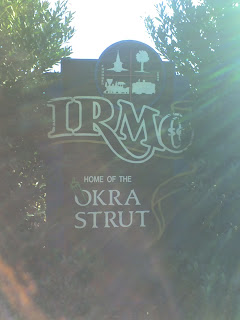Webbed by God. This maybe life changing for you and your family. Please be warned the following is going to warp you in to the world of Herschel's mind. Hold on, it isn't going to be a smooth ride. *note: any glands expressed on this blog are mine and not those of anyone else, so if you no likey you can, eat it!
Tuesday, December 30, 2008
Monday, December 29, 2008
Sunday, December 28, 2008
8th night. 90 down loads
Friday, December 26, 2008
Thursday, December 25, 2008
Wednesday, December 24, 2008
Tuesday, December 23, 2008
Monday, December 22, 2008
Sunday, December 21, 2008
Friday, December 19, 2008
Thursday, December 18, 2008
Wednesday, December 17, 2008
Sunday, December 14, 2008
Saturday, December 13, 2008
Wednesday, December 10, 2008
because I know you want to know! And I know this
ever wonder.....hey I wonder where that came from?
Once in a Blue Moon: A neat description of "not very often," it refers to the second full moon within a month - a rare thing indeed. Full moons happen about every 29.5 days, and since a typical month runs between 30 to 31 days, the likelihood of two in a month is slim. But over the course of a century there'll be 41 months with two full moons, so once in a blue moon really means - if you want to get literal - once every 2.4 years.
Mad as a Hatter: Today we know enough to keep clear of mercury, but hat makers once used it to make the brims of hats. When absorbed through the skin, it could wreak havoc on the nervous system: tremors, fatigue, not to mention behavioral dysfunction - that is, crazy behavior. Just think of Lewis Carroll's Mad Hatter from Alice's Adventures in Wonderland.
Raining Cats and Dogs: In 1600s England it was common practice to discard any waste into the streets - even dead household pets. Once it rained so much that the now-deceased Tabbies and Fidos became buoyant and floated along the streets, thus inspiring writer Richard Brome in 1651 to record, "it shall rain dogs and polecats."
Saved by the Bell: Before modern medicine, it was hard to determine if a person was really dead or simply in a really, really deep sleep. As a precaution, the presumed dead were buried with a string that ran from the corpse's finger to a bell. If there was a mistake, the person could twitch the finger and thus be saved from being buried alive.
The Acid Test: Gold Rush miners tested possible gold nuggets in acid. Unlike other metals, gold won't corrode in acid, so if the nugget didn't dissolve it passed the acid test and therefore must be pure gold. If a person passes a figurative acid test, they're telling the truth, as opposed to the literal acid test, which would be quite painful, not to mention corrosive.
In the Limelight: Theater stages used to be illuminated by heating lime (calcium oxide) until it glowed brightly. Lime has a high melting point, and when heated, gives off a brilliant white light. The light was then focused into a spotlight, so if an actor was in the limelight, he was certainly the center of attention (and probably very hot as well.)
Dog Days: The ancient Romans noticed that the Dog Star, Sirius, rose at the same time as the sun on the hottest days of the year, so they made the natural assumption that Sirius in the sky added to the heat of the day. Today it's generally accepted that the "dog days" of summer are July 3 through August 11. But they have nothing to do with Sirius.
Chew the Cud: If you figuratively chew the cud, you're chatting with an acquaintance. If you literally chew the cud, you're regurgitating food from your stomach to be chewed a second time (don't even try it). Cows are ruminants - this means that to properly digest grass to pass through their four-chambered stomachs, they need to rechew it. Consequently, a cow's mouth seems to go nonstop, just like a person who is "chewing the cud."
Don't Look a Gift Horse in the Mouth: In other words, don't be ungrateful when someone gives you something. You can tell a horse's age by looking at its teeth, particularly the incisors, but if someone gave you a horse as a gift, it would be considered rude to examine its teeth. (This would be like looking for the price tag on the present.)
The Bee's Knees: It's 1920s slang for something wonderful - but why would the knees of the Apis mellifera, the common honeybee, be something to be excited bout? Well, when bees find pollen they carry it back to the hive on pollen baskets located on their hind legs near their knees (yes, bees have knees.) The pollen is then used to make honey.
Cold Turkey: To completely abandon an addictive habit is to go cold turkey. As a result, the habit-kicker may experience cold sweats and goose bumps as blood rushes from the surface of the skin to internal organs. That bristling gooseflesh looks like the skin of a plucked goose (which looks quite similar to a plucked turkey). And doesn't it sound better to go cold turkey than to go cold goose?
Top 10 Most Useless Body Part10. Plica semilunaris
Better known as your third eyelid, or maybe not, this organ in our bodies is just one of the many parts that we don’t need. If you pull up on each of your eyelids, the plica semilunaris will be exposed. This part of the eye is known to produce sleep or that weird crust you have in your eyes when you wake up. Thank you plica semilunaris. How could we live without waking up with weird stuff in our eyes?
9. Arrector Pili
The arrector pili are extremely small muscles fibers that are attached to each hair follicle on your body. It is known to make the hairs stand, which causes goose bumps. Most mammals, including his humans have these small muscle fibers; however, they serve no real purpose. They are much more helpful when it comes to animals with much more hair because they provide a layer of insulation.
8. Wisdom teeth
Wisdom teeth are those that are located in the back of the mouth. These teeth were once very helpful, especially when humans had a diet that consisted of a lot of tough meat. Wisdom teeth, at this time, allowed humans to properly chew their food. Nowadays, many people don’t even get them. And if they do, they’re surely in for a surprise. Generally wisdom teeth are removed, due to them growing in wrong or causing pain. These chompers can cause a lot of pain either way!
7. Coccyx
The coccyx, more commonly known as the tailbone, is the last part of the human vertebrae. It consists of five separate or fused vertebrae and is the remnant of the vestigial tail. However, the coccyx isn’t completely useless. It does allow many different ligaments, tendons, and muscles to attach. It is also helpful when it comes to weight-bearing. In any case, the coccyx is generally much more important in those mammals with tails.
6. Tonsils
The tonsils are another useless part of the body that can cause certain people a lot of pain. Open your mouth wide and you’ll see a tonsil on each side of your throat, unless you have had them removed. Tonsils are lymphoid tissues that are prone to becoming infected and swelling up. And you know what that means, surgery to get rid of ‘em!
5. Adenoids
Adenoids are masses of lymphoid tissue that are located at the very back of the nose. These tissues are part of the immuine system and trap bacteria that can cause viruses. However, they only provide a strong defense against bacteria that is inhaled. As you grow, your adenoids shrink, which makes them useless. They are only helpful when you are a child.
4. Sinuses
Sinuses are one part of the body that doctors really don’t know too much about. We have a lot of them, but they’re nothing but air-filled spaces. Some say that they insulate our eyes while some doctors say that they influence our voice’s tone and pitch. In any case, no one exactly knows what they’re for, but we do know that they cause headaches. Sinuses are also famous for infections.
3. Male nipples
This doesn’t need much of an explanation. Males don’t breastfeed, so nipples really aren’t needed. I guess they serve as decoration.
2. Gall bladder
This is just another part of the body that is sometimes surgically removed. The gall bladder is a small organ that is known to store bile as well as aid in digestion. However, the gall bladder can sometimes produce gall stones and cause people to not be able eat without vomiting. If this is the case, out it goes.
1. Appendix
The appendix is a narrow, muscular tube that attaches to the large intestine. Its purpose is to digest cellulose. The appendix was a more important and necessary organ when the body was introduced to more vegetables. When the human diet consisted of mostly plants, the appendix was extremely important. However, in today’s world, the appendix isn’t a necessary organ. In fact, sometimes the appendix can become infected and burst. About 300,000 Americans have their appendix removed
You see these opening logos every time you go to the movies, but have you ever wondered who is the boy on the moon in the DreamWorks logo? Or which mountain inspired the Paramount logo? Or who was the Columbia Torch Lady? Let's find out:
1. DreamWorks SKG: Boy on the Moon
In 1994, director Steven Spielberg, Disney studio chairman Jeffrey Katzenberg, and record producer David Geffen (yes, they make the initial SKG on the bottom of the logo) got together to found a new studio called DreamWorks.
Spielberg wanted the logo for DreamWorks to be reminiscent of Hollywood's golden age. The logo was to be a computer generated image of a man on the moon, fishing, but Visual Effects Supervisor Dennis Muren of Industrial Light and Magic, who has worked on many of Spielberg's films, suggested that a hand-painted logo might look better. Muren asked his friend, artist Robert hunt to paint it.
Hunt also sent along an alternative version of the logo, which included a young boy on a crescent moon, fishing. Spielberg liked this version better, and the rest is history. Oh, and that boy? It was Hunt's son, William.
The DreamWorks logo that you see in the movies was made at ILM from paintings by Robert Hunt, in collaboration with Kaleidoscope Films (designers of the original storyboards), Dave Carson (director), and Clint Goldman (producer) at ILM.
2. Metro-Goldwyn-Mayer (MGM): Leo The Lion
In 1924, studio publicist Howard Dietz designed the "Leo The Lion" logo for Samuel Goldwyn's Goldwyn Picture Corporation. He based it on the athletic team of his alma mater Columbia University, the Lions. When Goldwyn Pictures merged with Metro Pictures Corporation and Louis B. Mayer Pictures, the newly formed MGM retained the logo.
Since then, there have been five lions playing the role of "Leo The Lion". The first was Slats, who graced the openings of MGM's silent films from 1924 to 1928. The next lion, Jackie, was the first MGM lion whose roar was heard by the audience. Though the movies were silent, Jackie's famous growl-roar-growl sequence was played over the phonograph as the logo appeared on screen. He was also the first lion to appear in Technicolor in 1932.
The third lion and probably most famous was Tanner (though at the time Jackie was still used concurrently for MGM's black and white films). After a brief use of an unnamed (and very mane-y) fourth lion, MGM settled on Leo, which the studio has used since 1957.
The company motto "Ars Gratia Artis" means "Art for Art's Sake."

3. 20th Century Fox: The Searchlight Logo

In 1935, Twentieth Century Pictures and Fox Film Company (back then mainly a theater-chain company) merged to create Twentieth Century-Fox Film Corporation (they later dropped the hyphen).
The original Twentieth Century Pictures logo was created in 1933 by famed landscape artist Emil Kosa, Jr. After the merger, Kosa simply replaced "Pictures, Inc." with "Fox" to make the current logo. Besides this logo, Kosa was also famous for his matte painting of the statue of liberity ruin at the end of the Planet of the Apes (1968) movie, and others.
Perhaps just as famous as the logo is the "20th Century Fanfare", composed by Alfred Newman, then musical director for United Artists.
4. Paramount: The Majestic Mountain

Paramount Pictures Corporation was founded in 1912 as Famous Players Film Company by Adolph Zukor, and the theater moguls the Frohman brothers, Daniel and Charles.
The Paramount "Majestic Mountain" logo was first drawn as a doodle by W.W. Hodkinson during a meeting with Zukor, based on the Ben Lomond Mountain from his childhood in Utah (the live action logo made later is probably Peru's Artesonraju). It is the oldest surviving Hollywood film logo.
The original logo has 24 stars, which symbolized Paramount's then 24 contracted movie stars (it's now 22 stars, though no one could tell me why they reduced the number of stars). The original matte painting has also been replaced with a computer generated mountain and stars.
5. Warner Bros.: The WB Shield
Warner Bros. (yes, that's legally "Bros." not "Brothers") was founded by four Jewish brothers who emigrated from Poland: Harry, Albert, Sam, and Jack Warner. Actually, those aren't the names that they were born with. Harry was born "Hirsz," Albert was "Aaron," Sam was "Szmul," and Jack was "Itzhak." Their original surname is also unknown - some people said that it is "Wonsal," "Wonskolaser" or even Eichelbaum, before it was changed to "Warner."
In the beginning, Warner Bros. had trouble attracting top talents. In 1925, at the urging of Sam, Warner Bros. made the first feature-length "talking pictures" (When he heard of Sam's idea, Harry famously said "Who the hell wants to hear actors talk?"). That got the ball rolling for the studio and made Warner Bros. famous.
The Warner Bros. logo, the WB Shield, has actually gone many revisions. Jason Jones and Matt Williams of CLG Wiki have the details:
6. Columbia Pictures: The Torch Lady

Columbia Pictures was founded in 1919 by the brothers Harry and Jack Cohn, and Joe Brandt as Cohn-Brandt-Cohn Film Sales. Many of the studio's early productions were low-budget affairs, so it got nicknamed "Corned Beef and Cabbage." In 1924, the brothers Cohn bought out Brandt and renamed their studio Columbia Pictures Corporation in effort to improve its image.

Vintage Columbia Pictures Logo ation of America. It was designed in 1924 and the identity of the "Torch Lady" model was never conclusively determined (though more than a dozen women had claimed to be "it.")
In her 1962 autobiography, Bette Davis claimed thatcauldia dell was the model, whereas in 1987 People Magazine named model and Columbia bit-actress Amelia Batchler as the girl. In 2001, the Chicago Sun-Times named a local woman who worked as an extra at Columbia named Jane Bartholomew as the model. Given how the logo has changed over the years, it may just be that all three were right!
The current Torch Lady logo was designed in 1993 by micheal dieas who was commissioned by Sony Pictures Entertainment to return the lady to her "classic" look.
Though people thought that actress Annette Bening was the model, it was actually a Louisiana homemaker and muralist named Jenny Joseph that modeled the Torch Lady for Deas. Rather than use her face, however, Deas drew a composite face made from several computer-generated features
now you know and knowing is half the battle.











































